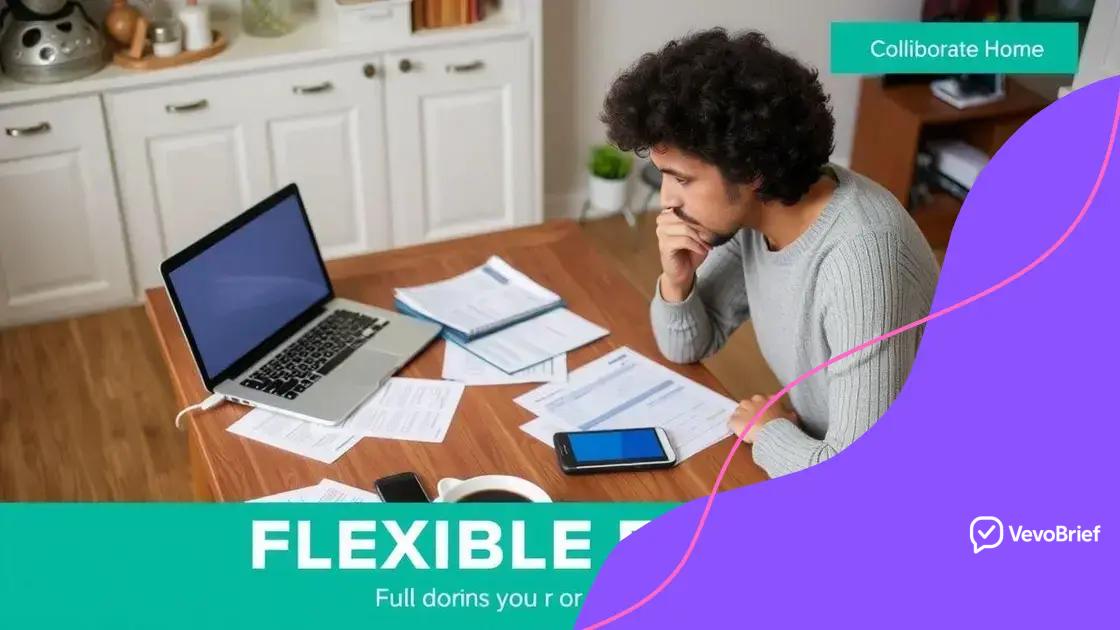Budgeting for single-income homes: smart tips to thrive

Budgeting for single-income homes involves understanding unique financial challenges, utilizing effective budgeting tools, maximizing savings, and adjusting budgets for unexpected expenses to ensure long-term financial stability.
Budgeting for single-income homes can feel daunting, but it’s crucial for financial stability. Have you ever wondered how to stretch your dollars further? Let’s explore some strategies that can make a real difference.
Understanding the unique challenges of single-income households
Single-income households face unique challenges that can impact their financial health and overall well-being. Understanding these challenges is the first step in finding effective solutions to overcome them.
Financial Strain
One of the most significant issues for single-income families is the financial strain. With only one source of income, budgeting becomes critical.
- Higher reliance on budget management
- Increased risk in case of unemployment
- Limited savings and investment opportunities
In addition to financial pressures, single-income households often deal with emotional and social challenges. Many find themselves isolated or overwhelmed by the responsibilities. It’s essential to acknowledge these feelings and seek support when needed.
Managing Household Responsibilities
Single-income families often juggle multiple roles, leading to a challenging home life. This balancing act can cause stress.
- Strain from being both the provider and caretaker
- Time constraints on personal and professional life
- Difficulty in finding childcare options
By understanding these hurdles, families can open dialogues about sharing responsibilities and finding support networks. It’s crucial to communicate needs clearly.
Single-income households also face the challenge of long-term planning. With a singular income stream, preparing for emergencies or future goals can feel overwhelming. However, creating a realistic financial plan can help set achievable milestones.
Essential tools for effective budgeting
Using the right tools is crucial for effective budgeting, especially in single-income households. Tools can help simplify tracking expenses and planning for the future.
Budgeting Apps
A budgeting app can be a game changer. With these apps, you can set budgets, track spending, and even analyze your financial habits.
- Popular apps include Mint, YNAB, and PocketGuard.
- Most apps offer budget categories to help with organization.
- Many allow you to link bank accounts for real-time updates.
By using an app, you can gain insights into your spending patterns that might be hard to see otherwise.
Spreadsheets
If you prefer a more hands-on approach, a spreadsheet can also be an effective tool for budgeting. A simple spreadsheet can help you organize your financial data.
- Templates are available for Google Sheets and Excel.
- You can customize categories to fit your lifestyle.
- Spreadsheets allow for easy calculations and adjustments.
Having a visual representation of your finances can help you stay accountable and focused.
In addition to apps and spreadsheets, consider using a journal or notebook. Writing things down not only helps recovery but also offers a space for reflection. You can jot down thoughts about spending habits, plans for saving, and even monthly financial goals.
Creating a flexible budget that works

Creating a flexible budget is essential for single-income households. A flexible budget allows you to adapt to changes without feeling restricted.
Assess Your Income and Expenses
Start by evaluating your monthly income and necessary expenses. This assessment gives you a clear picture of your financial landscape.
- List all sources of income.
- Identify fixed expenses like rent, utilities, and insurance.
- Track variable costs such as groceries and entertainment.
By knowing where your money comes from and where it goes, you can make informed decisions about your budget.
Set Realistic Goals
Setting realistic financial goals can help you stay motivated. Consider what you need in both the short and long term.
- Short-term goals might include saving for a family vacation.
- Long-term goals can involve saving for a home or retirement.
- Adjust your budget to allocate funds towards these goals.
Having goals in mind makes budgeting feel less like a chore and more like a path to your dreams.
It’s also vital to leave room for unexpected costs. Life can be unpredictable, especially when you’re on a single income. By building flexibility into your budget, you’re prepared for surprises without derailing your financial plans.
Regularly review and adjust your budget. Set a monthly date to go over your income and expenses, allowing you to see trends and make necessary changes. This ongoing process helps maintain a healthy financial outlook.
Maximizing savings and cutting unnecessary expenses
Maximizing savings and cutting unnecessary expenses is vital for maintaining a healthy budget in single-income households. By focusing on these areas, you can free up more funds for what truly matters.
Identify Unnecessary Expenses
Start by reviewing your monthly spending. Look for areas where you can cut back.
- Evaluate subscriptions: Do you use all your streaming services?
- Check dining out: Consider preparing more meals at home.
- Reassess impulse buying: Take a moment before purchases to decide if it’s really needed.
It’s surprising how quickly small expenses can add up. By tightening your budget and eliminating the non-essential items, you can find extra cash to save or invest.
Smart Shopping Tips
When it comes to shopping, being strategic can lead to significant savings. Always look for deals and plan ahead.
- Use coupons and cash-back apps.
- Shop sales and stock up on essentials when prices are low.
- Consider buying in bulk to save on frequently used items.
Incorporating these practices not only helps to cut costs but also encourages more mindful spending habits.
Another effective strategy is to set up an automatic savings plan. When you receive your income, automatically transfer a set amount to your savings account. Out of sight, out of mind! This method allows your savings to grow without you having to think about it.
Lastly, review your utility bills and shop around for better rates. Many providers offer competitive pricing, and switching can lead to monthly savings on services like electricity and internet.
Adjusting your budget for unexpected expenses
Adjusting your budget for unexpected expenses is an essential skill for anyone, especially for those in single-income households. Life is full of surprises, and having a plan can help you navigate these challenges.
Recognize Common Unexpected Expenses
Begin by identifying what these unexpected expenses might be. Knowing what to expect can help you prepare.
- Medical bills: What happens if someone gets sick?
- Car repairs: How do you handle an unexpected breakdown?
- Home maintenance: Are you ready for urgent repairs?
By understanding these possibilities, you can create a safety net in your budget.
Build an Emergency Fund
One of the best ways to manage unexpected costs is by having an emergency fund. Aim to save at least three to six months’ worth of living expenses. This fund can be a lifesaver when things go awry.
- Set aside a small amount each month to build this fund.
- Keep the money in a separate savings account to avoid temptation.
- Review and adjust your savings goals regularly.
Having money set aside makes it easier to handle surprises without stress.
When unexpected expenses arise, adjust your budget to accommodate them. Consider which non-essential areas you can cut back on temporarily.
For instance, if you face a medical bill, you might choose to limit dining out and redirect those funds to cover the new expense. Flexibility is key to staying on track.
Lastly, regularly revisit and update your budget. Life changes and so do your financial needs. By keeping your budget current, you can better prepare for any unexpected expenses that come your way.
FAQ – Questions about budgeting for single-income homes
What is the first step in creating a budget?
The first step is to evaluate your monthly income and necessary expenses to understand your financial situation.
How can I identify unnecessary expenses?
Review your monthly spending and look for areas where you can cut back, such as dining out or unused subscriptions.
Why is it important to have an emergency fund?
An emergency fund helps you manage unexpected expenses without derailing your budget and provides peace of mind.
How often should I review my budget?
It’s best to review your budget monthly to track your progress and adjust for any changes in income or expenses.
